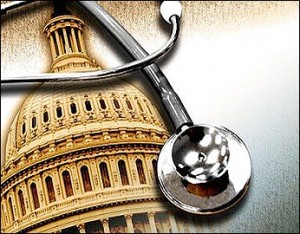Three Main Features of the The Affordable Care Act
May 17th, 2013
 The full implementation of the Affordable Care Act of the Obama administration is just around the corner, but we still can’t see the complete picture of how the new healthcare law will affect us. Will we really see more affordable coverage? Will we get better benefits? Are we really better off with it?
The full implementation of the Affordable Care Act of the Obama administration is just around the corner, but we still can’t see the complete picture of how the new healthcare law will affect us. Will we really see more affordable coverage? Will we get better benefits? Are we really better off with it?
Changes Expected Under the Affordable Care Act
1. Individual Mandate
Under the Affordable Care Act, everyone must obtain minimum essential coverage for themselves (and their dependents) or pay a penalty. The annual penalty was set at $95 in 2014, increased to $325 in 2015, and to $695 in 2016, or up to 2.5% of income.
What are minimum essential coverage? These include coverage under government-sponsored programs (Medicare, Medicaid), health plans available in the individual market, a qualified employer-sponsored plan, grandfathered health plans, and certain other coverage.
It does not include coverage consisting of excepted benefits, such as dental-only coverage, and employer-based coverage that is not offered through an “eligible employer-sponsored plan”, such as a Health Reimbursement Arrangement.
2. Employer Mandate for Applicable Large Employers
Starting in 2014, employers with an average of 50 or more full-time equivalent employees during the previous calendar year are required to offer affordable health insurance coverage with “minimum essential health benefits” to their workers. Companies who fail to comply with this requirement will pay a penalty on their tax return.
Minimum essential health benefits include:
- Ambulatory patient services, such as doctor’s visits and outpatient services
- Emergency services
- Hospitalization
- Maternity and newborn care
- Mental health and substance use disorder services, including behavioral health treatment
- Prescription drugs
- Rehabilitative and habilitative services and devices
- Laboratory services
- Preventive and wellness services and chronic disease management
- Pediatric services, including oral and vision care
3. Health Insurance Exchanges
Starting Oct. 1, 2013, individuals can purchase health insurance coverage through new State Health Insurance Exchanges (i.e., New York State of Health, CoveredCA, etc). These “marketplaces,” where health insurance companies offer their ACA-compliant plans, will either be operated by the state, by the federal government, or by a state-federal partnership.
There will be two types of Exchanges available in every state:
American Health Benefit Exchange “AHBE”: An individual Exchange
Small Business Health Options Program (“SHOP”): A group Exchange for employers with 100 or fewer employees (eligibility will vary by state)
Under the ACA, only Qualified Health Plans can be offered on the Exchanges. These plans must provide essential health benefits, follow the guidelines on cost-sharing (deductibles, co-payments, and out-of-pocket maximum amounts), and other requirements. All plans will be guaranteed issue.
Tax credits and tax subsidies will only be available for coverage purchased through state Health Insurance Exchanges.
For more information, visit the Health Insurance Exchange guide.
Related posts from our blog:
No related posts.
Tags: affordable care act